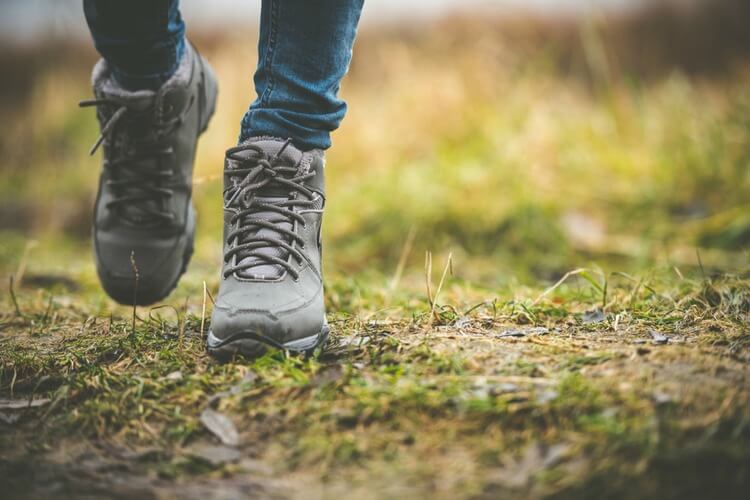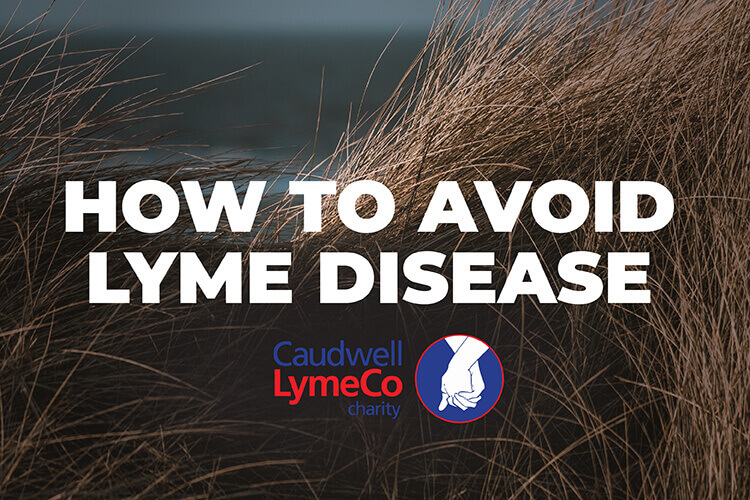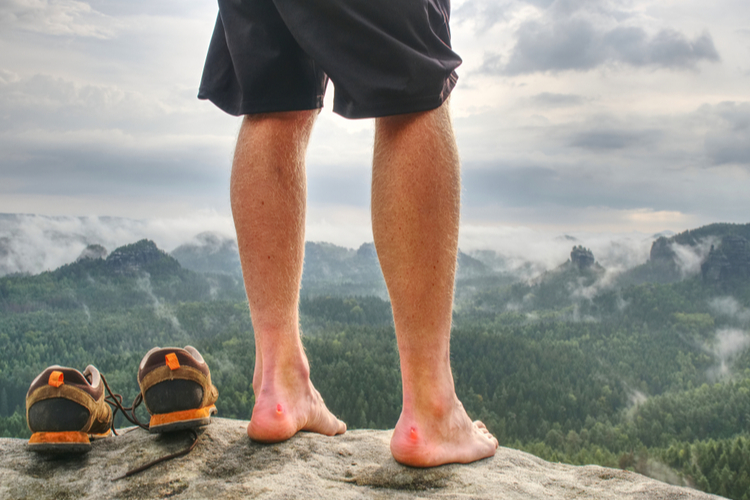
Blisters are the bane of all walkers, whether you’re on a long hiking expedition or strolling around town.
They can cause great pain, regardless of which footwear you have on, and can put some people off wearing them repeatedly or for long periods of time.
Although hiking and walking boots are designed to limit wear on your feet and stand up to whatever you throw at them, blisters can happen all on their own. But why do they form and what can you do to avoid them?
Read on to find out more about how you can avoid blisters when hiking…
What causes blisters?
There are key reasons why a blister can form while walking, and they all come as a result of three factors: heat, moisture and pressure.
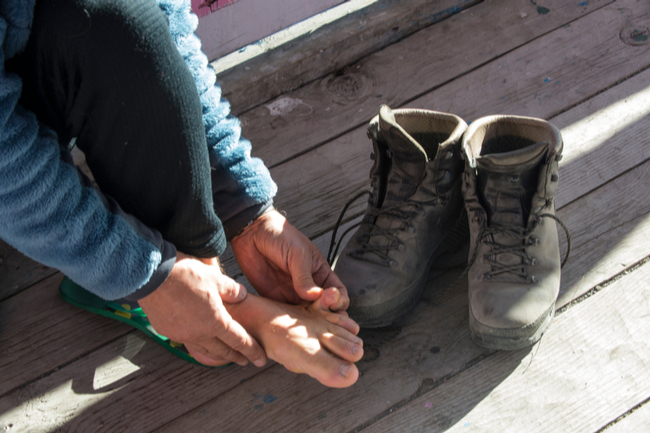
These factors then affect your skin through irritation, the friction from your feet moving within your footwear. The most obvious reason this can happen is through poorly fitting boots where your feet move within them, rubbing on the heel or toes.
Other causes of blisters include:
- Thin or poor-fitting socks
- Wrinkled socks - this can include the seam
- Excessive sweat
- Wet feet from rain or river crossings
- Not breaking-in new boots - particularly leather boots
Are blisters dangerous?
Blisters typically clear on their own within a week - blood blisters may take longer - and you shouldn’t need to see a GP.
The NHS gives advice on avoiding infection from a blister, but there are some steps you can take during a hike. The main point is that you should not, under any circumstances, burst the blister yourself.
Another piece of advice from the NHS is that you should not wear the boots that caused your blister until it heals properly. In other words, stop your hike and head home - this will make sure your blister does not get worse and you can start treating it.
How to treat a blister
Treating a blister is quite straightforward once you’re home - place an ice pack or a bag of frozen veg wrapped in a towel on the blister for up to 30 minutes.
This will ease the immediate pain from your blister and help it become more solid than fluid - when it is more prone to bursting and becoming infected.
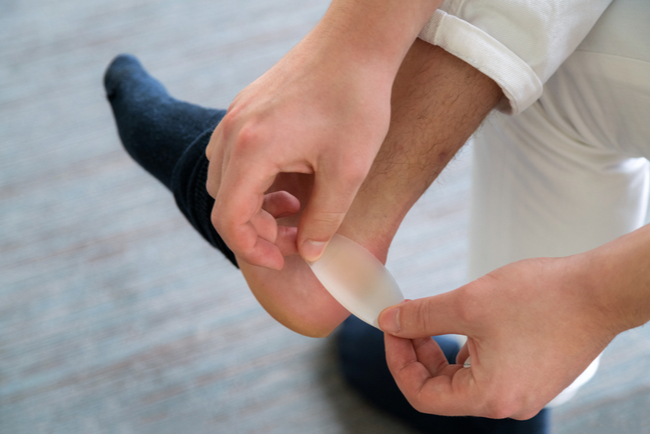
If your blister is likely to burst - through where it is on your foot or activity you’re doing, place a soft plaster or blister pad over it. If you are worried or aren’t sure, place a blister pad on it to be safe.
Once the blister has burst, let it drain on its own before placing a plaster or blister pad on top - do not touch the blister without washing your hands first. If you want to dress it, a hydrocolloid dressing can help reduce pain and speed up healing, according to NHS advice.
How to stop blisters from forming
There are various steps you can take to stop blisters from forming when you head off hiking, through every step of owning your boots.
Buy boots that fit perfectly
Poorly-fitting boots are the most common cause of blisters, so you need to make sure that your footwear fits properly.
Ensuring your footwear fits to avoid blisters depends on the activity you’re going to be doing. So, ask yourself, “what am I going to be using them for?” before you buy. Light walking and holidays will be completely different from expeditions and DofE.
Related: Which Walking Boots? Buying Guide
You want there to be space at the front of your boot to cater for your feet swelling in different seasons and as you walk, as well as changes in incline - ascents and descents. A finger’s width is a good length to leave.
When buying, wear the socks you would wear when walking, this will give you a clear idea of how the boots will feel when you’re outdoors. Lace them up properly when trying them on so you get an accurate feel for how well they fit.
Have the right socks
Socks are a key part of staving off blisters - either from being too thick or thin or the seam rubbing on your toes.
Cotton socks tend to hold moisture next to your skin, which, when combined with friction from walking, causes blisters to form. You should choose moisture-wicking polyester or wool socks. Alternatively, you could even try thin merino wool or polyester liner socks underneath a second pair of thicker socks.
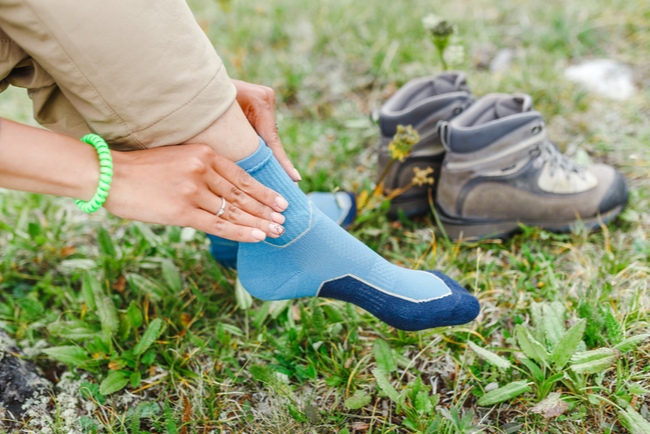
It is important to consider the thickness of your socks when fitting your footwear, as they can change the volume of your foot - making it prone to rubbing and extra pressure. You also need to consider the sock’s insulation and how this can affect sweat building up.
Break your new boots in
If you’ve bought new boots, you need to break them in when you get home - don’t go hiking straight away - to limit blisters forming.
Breaking-in boots will help your feet adjust to them. You’ll need to wear the socks you’ll use for hiking and walking.
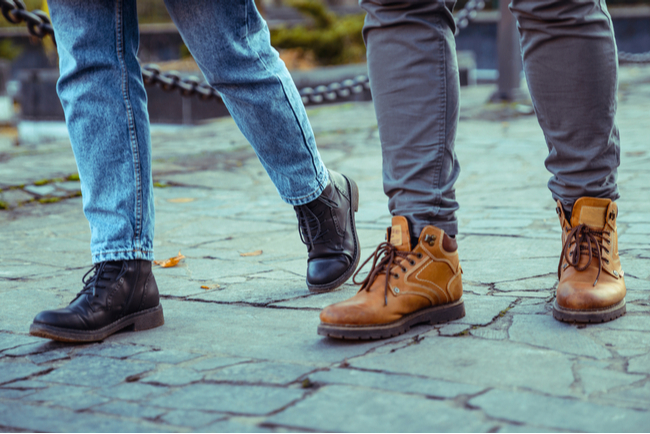
Treat your boots like a pair of slippers around your home, using them for odd jobs and walking back and forth into different rooms. This will start building up your comfort and moulding the boot to your foot.
Gradually, start walking outside with small trips, going further out in time. Stroll around the block or to the shops. Your hike will be much more enjoyable and decrease your chances of a blister forming if your new boots already have some give.
Care for your boots
Although it may appear an obvious link, cleaning, proofing and conditioning your boots can prevent blisters forming.
Looking after your footwear will not only improve their longevity but it will reduce the risk of blisters in the future. Cleaning and waterproofing your footwear after a hike will help keep your feet dry - a key cause of blisters.
Related: How to care for your hiking and walking boots
Cleaning and conditioning your boots will keep them from getting too rigid and stiff, making them uncomfortable. This could cause unnecessary strain on your feet, rubbing against the boots and leading to blisters.
You’ll find leading cleaning products by Grangers and Nikwax at Winfields Outdoors.
Handy hiking tips for blister prevention
There are always tricks to avoid blisters or partially treat them when you’re at home or out on a trail, and we’ve put some together for you:
- Dust some talcum powder inside your socks if your feet get sweaty
- Take a spare pair of socks with you
- Always swap your socks if your feet get damp or wet
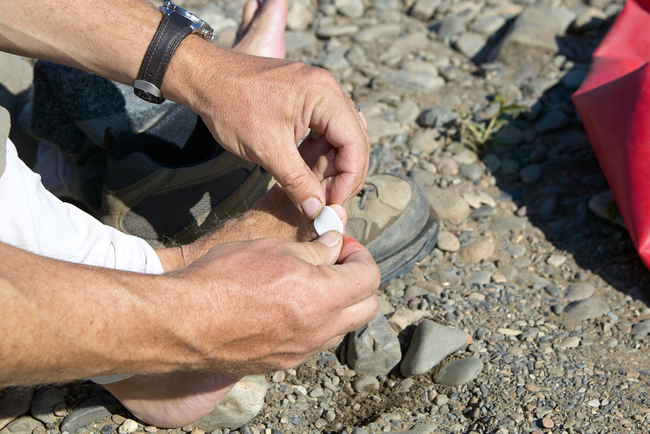
- Carry some blister pads or plasters in your pack, only apply them to dry skin
- If a spot feels uncomfortable, stop and treat it immediately
- If you stop for a break on your hike, take your boots off and allow your feet to breathe, cool and dry
If you continue to get blisters from your boots, come in and visit our team to get a true boot fitting or insoles to help keep your feet blister-free.
Read more from the Winfields Outdoors blog for inspiration and gear updates...
The Best Walking Boots for Men, Women & Kids | Walking & Hiking Boots Buying Guide | How To Clean Your Walking Boots Or Shoes









